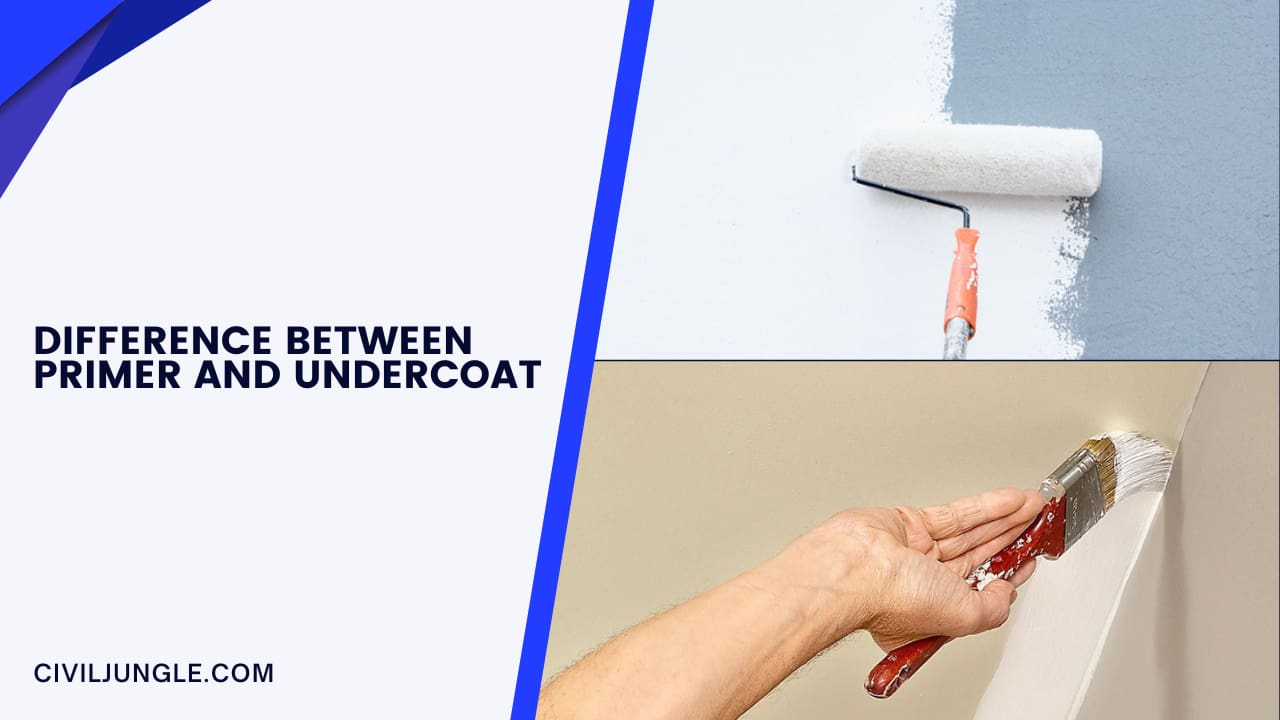
Introduction of Undercoat
Paint plays a crucial role in the appearance of the structure. Paint also protects the structure from the external agencies.
Painting enhances the aesthetical view of the structure. It is very necessary that the painting of the home should be done properly because it helps to maintain the overall condition of the structure and protect it from the moisture and steel components.
In this article, we will learn about What is an undercoat, functions of undercoat and how to apply the Undercoat.
What Is Undercoat?

Undercoat paint is a layer which is applied on the surface after priming and before painting the surface. The undercoat is the second stage of painting which is applied to the coat of primer.
There are different types of undercoat that are used on various surfaces such as metal, wood and plastic board. Undercoat paint is the second stage of application of coat on the surface of the wall.
Undercoat paint protects from the external elements and helps to achieve a uniform base for the application of topcoat on the surface.
What Is Undercoated Skirting Board?
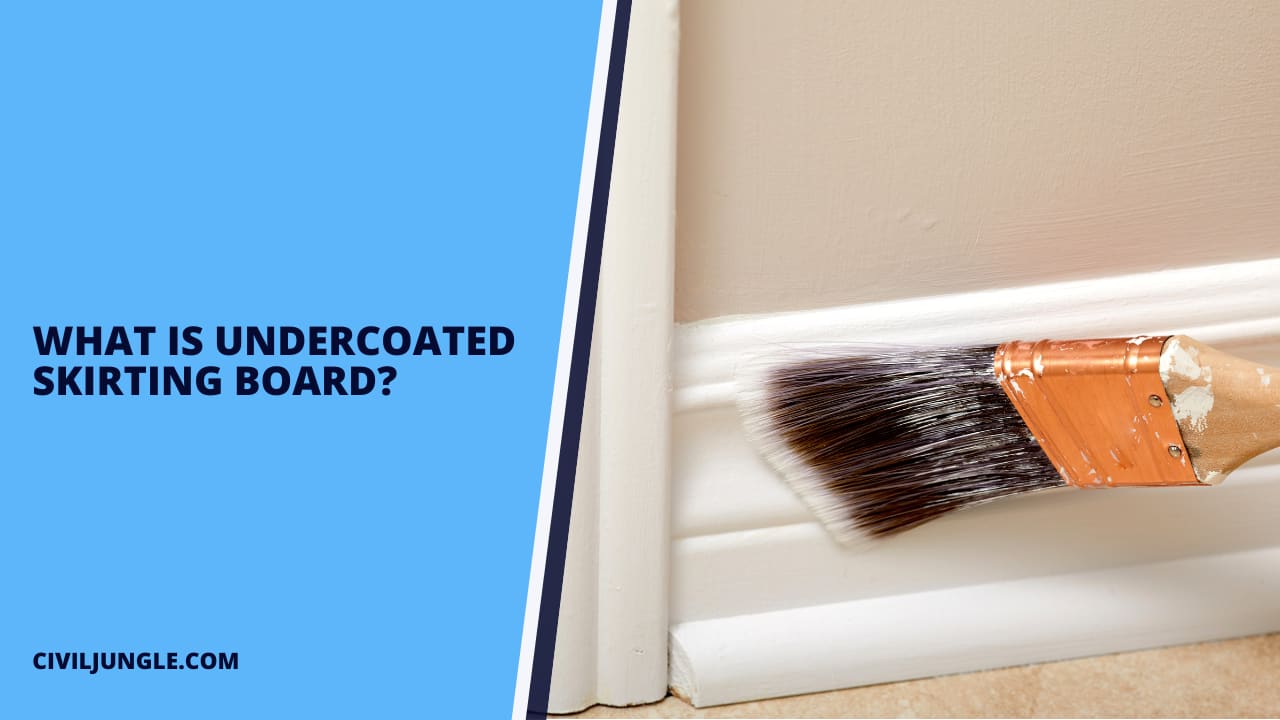
Undercoated skirting board refers to skirting boards that have been treated with an undercoat layer of paint or primer. The undercoat is typically applied as a base layer to prepare the skirting board for the final coat of paint.
It helps improve the adhesion of the paint, enhances durability, and provides a smooth and even surface for the topcoat. The undercoat layer also helps seal the wood and protect it from moisture, ensuring the longevity of the skirting board.
What Does Undercoat Paint Do?
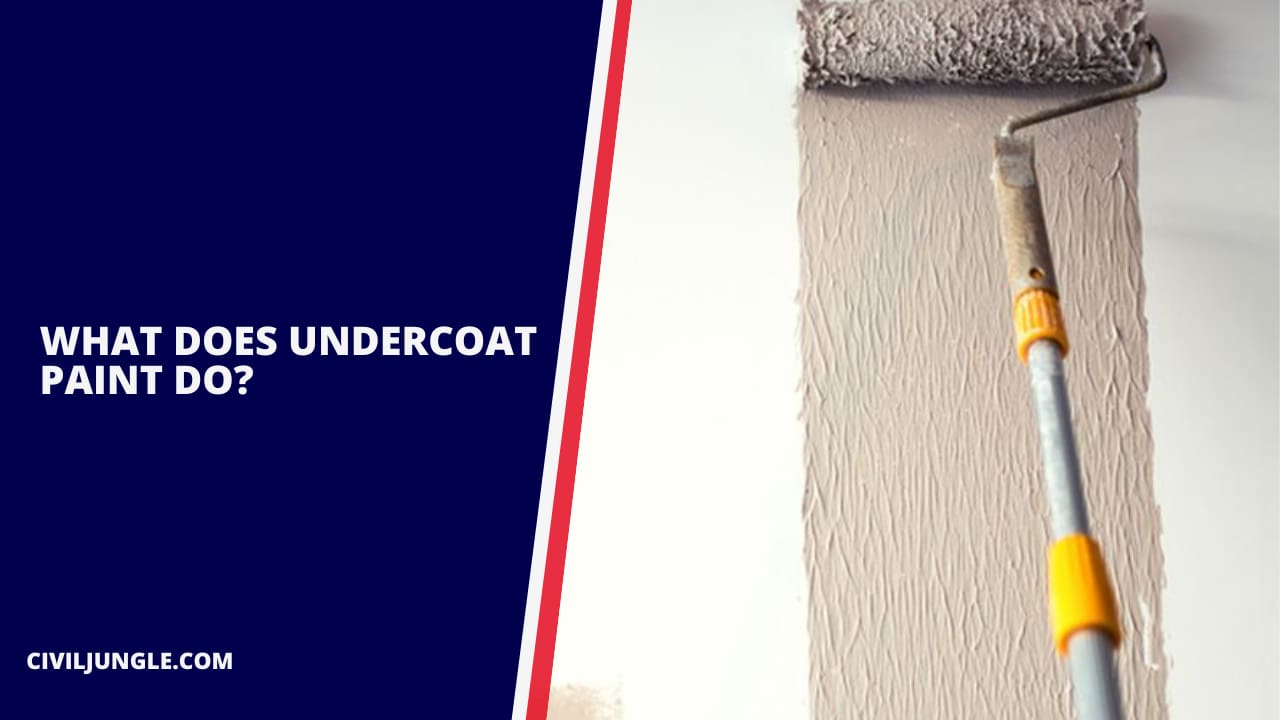
There are many advantages to using undercoat paint. The process of applying undercoat paint helps to achieve the best painting results when the surface is properly prepared.
The Undercoat paint helps to protect the surface by providing a protective film to the base. Undercoat protects from external elements such as moisture and aggressive environmental conditions.
The undercoat ensures the even coverage on the surface which will help to achieve uniform paint on the surface. All the uneven space or the spots are covered by applying undercoat paint.
The undercoat is very beneficial to fill the gaps or are voids on the surface and achieve the uniform paint on the surface of the wall.
Why Use Undercoat?
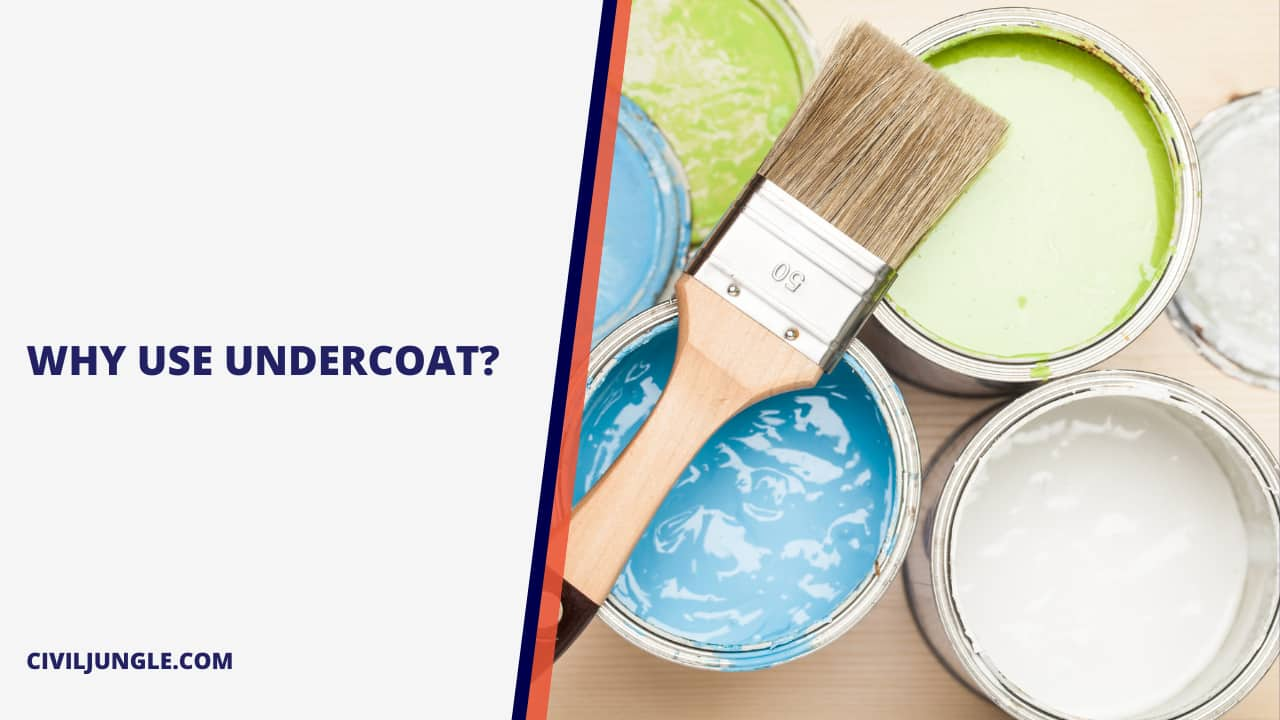
- The undercoat is very important to fill the minor imperfections to create a smooth even surface that is ready for the application of the final coat or the topcoat.
- It undercoat can be applied to any surface which has to be painted. It is very necessary to use undercoat for the surface because it helps to provide a uniform even surface for the application of the final coat which will give a quality finish to the surface.
Functions of the Undercoat

The functions of undercoat are as follows
- Undercoat paint provides a base that the topcoat will stick to.
- Undercoat provides a good addition to the primer.
- Undercoat provides a pin which will make a barrier to prevent the moisture and other natural elements.
- Undercoat helps to fill out the small imperfections in the of surfaces.
- Undercoat switch are you for the timbers are generally used to provide the filling properties and smoothness to the surface.
Functions of the Primer

-
- The main function of the primer is to protect the substrate.
- It may also help to provide adhesion to the non-ferrous metals.
- Primers are used to seal the surface and prevent the entry of moisture.
- Primers help to prevent the steel surface from the rusting.
Is Undercoat the Same as the Primer?

- It is the common question that arises in the mind of many people whether undercoat is the same as the primer.
- Here we highlight some of the main points which will clear the whole concept of primer and undercoat.
- The Undercoat and the primer both play a vital role before the application of the paint to the surface. The undercoat and primer are both plays a crucial role in providing a quality finish coat to the surface.
- The word primer derives from the Latin word ‘prim’ which means first. The undercoat and primer both are used to prepare the surface for the painting.
- Primer is the first coat which is used on the bare surfaces while the undercoat is the second coat of the paint which is provided on the wall over the primer.
- Primer gives the paint a good base which will form a strong bond to stick to undercoat and improves the overall appearance.
What Is the Difference Between Primer and Undercoat?
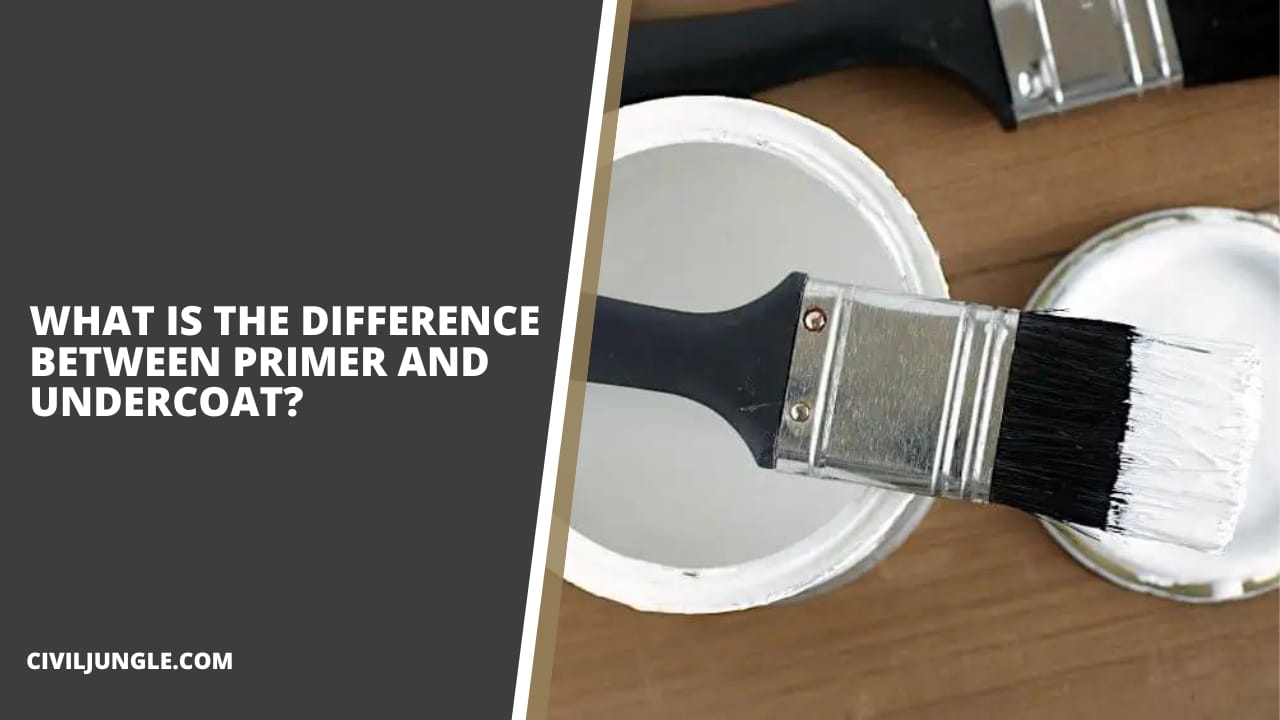
The difference between primer and undercoat are as follows
- Primer is the precoat or the first coat which is applied on the surface of the where the painting is to be done. While the undercoat is the second coat that is applied over or the application of primer.
- The primer works to hide the stains and helps to prevent the discolouration.
- Primer is very necessary and important to use when we have to change the colour from dark to the light one.
- Primer is used to seal and protect their surfaces such as plaster and wood. The undercoat is used on the surface which is already painted. The undercoat is the second coat which is provided on the surface before the application of the final coat.
- Undercoat paint is a subset of the primer. The Thumb Rule which is generally used is that if the surface is new then we have to use a primer to paint that surface.
- If the painting has to be done on the old surface which is already painted then apply the undercoat on that surface.
- The primer cannot be used as the last coat on the surface, but the undercoat can be used as the last coat on the surface of the wall.
How Many Coats of Undercoat?
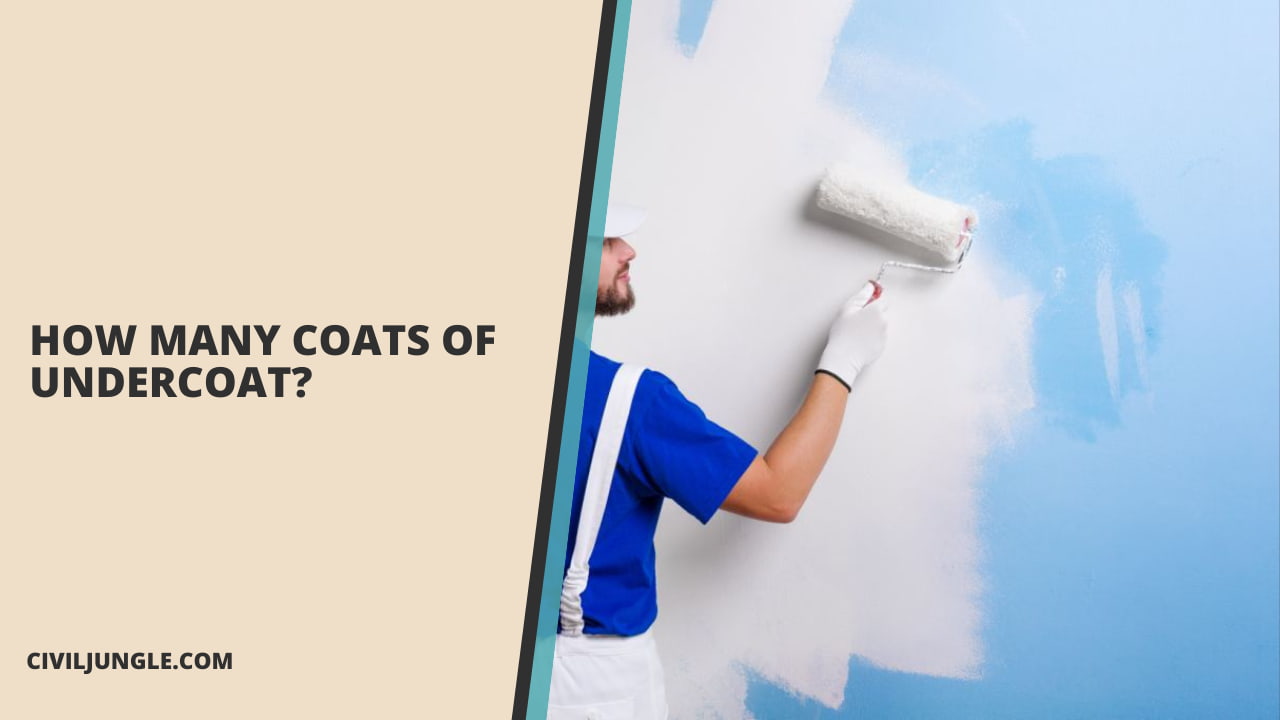
The process of the application of the Undercoat is as follows
Step 1: To achieve the quality finish to the surface, it is very important to prepare the surface properly before the application. The surface should be scrap with the help of sandpaper creasing the uneven elevations.
Step 2: Clean the surface properly and remove the dust and moisture.
Step 3: After the process of scraping and cleaning of the surface the primer is applied on the surface where the paint how to be done.
Step 4: After the surface will be completely clean and dried apply the undercoat.
Step 5: Now applied the final coat of the paint to the surface.
FAQ: Undercoat Paint
What Is Undercoat Paint?
Undercoat paint is a layer applied after the primer and before the topcoat in the painting process. It prepares the surface for the final coat by providing a uniform base and improving adhesion.
How Does Undercoat Paint Differ from Primer?
Primer is the first layer applied directly to the bare surface to seal and protect it, while undercoat is applied after the primer and before the topcoat. The primer provides a base for the paint to adhere to, while the undercoat helps to smooth out imperfections and ensure an even finish.
Why Is Undercoat Important?
Undercoat paint fills minor imperfections, improves paint adhesion, and ensures a smooth and uniform surface for the topcoat. It also provides an additional layer of protection against moisture and environmental elements.
Can Undercoat Be Used on All Surfaces?
Yes, undercoat can be applied to a variety of surfaces including wood, metal, and plastic. It is important to choose the appropriate undercoat type for the specific material you are working with.
How Many Coats of Undercoat Are Needed?
Typically, one to two coats of undercoat are sufficient, depending on the surface condition and the quality of the finish desired. Always follow the manufacturer’s recommendations for best results.
Can I Skip the Undercoat If I’m Using High-Quality Paint?
It’s generally not recommended to skip the undercoat, even if you’re using high-quality paint. The undercoat provides essential benefits such as filling imperfections and improving adhesion, which contribute to a better finish and longer-lasting paint job.
How Should I Prepare the Surface Before Applying Undercoat?
Prepare the surface by scraping off any loose paint, sanding to smooth out uneven areas, and cleaning to remove dust and moisture. Ensure the surface is completely dry before applying the undercoat.
Can I Apply Undercoat Over a Previously Painted Surface?
Yes, undercoat can be applied over an old painted surface. It helps to prepare the surface for the new topcoat, especially if the existing paint is uneven or has imperfections.
Is Undercoat Paint the Same as a Sealer?
No, undercoat paint and sealer are not the same. A sealer is used to block stains and seal porous surfaces, while undercoat paint is used to create a smooth, even base for the final coat of paint.
How Long Should I Wait Before Applying the Topcoat After the Undercoat?
Allow the undercoat to dry completely before applying the topcoat. Drying times can vary based on the type of undercoat and environmental conditions, but it’s typically recommended to wait at least 24 hours.

